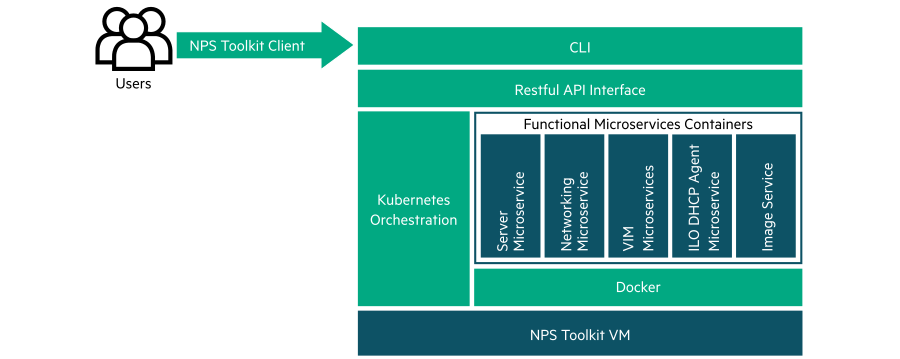NFV Platform Software Toolkit
The NPS toolkit is a purpose-built, optional, software package designed to automate, install, and configure the Telco Blueprint. You can now deploy the NPS toolkit package on a NPS toolkit VM, that is hosted on a remote machine (such as a laptop), which can then be connected to the rack that is being configured for the blueprint deployment. The NPS toolkit VM must have one of its interfaces connected to the customer network such that it can access the Telco Blueprint rack to be set up.
In addition to end-to-end deployment, the NPS toolkit also provides the ability to deploy its microservices independently in separate module or as a combination of modules.
The NPS toolkit extends its capability of using a single NPS installation to deploy multiple topologies. Those topologies include NFV racks that are in the same data center or across different data centers spread over geographical locations. This is only applicable if those racks are reachable or connected to the remote NPS.

Server Microservice
Redfish-based microservice is developed to configure the boot, BIOS, NIC, and RAID with customizable parameters using hardware profiles.
Master node:
default_master_profileWorker and bootstrap node:
default_worker_profile
Master node:
default_amd_master_profileWorker and bootstrap node:
default_amd_worker_profile
This microservice also enables you to create custom hardware profile containing the boot sequence, BIOS, NIC, and RAID parameters. Ensure that these parameters are supported by DMTF (Distributed Management Task Force) Redfish.
Networking Microservice
- HPE FlexFabric 5900 and HPE StoreFabric SN2100M
NETCONF-based microservice is developed for HPE FlexFabric 5900 switches to configure the ports, VLANs, trunks, and bonds that are required for the cloud platform. The profiles are also developed to allow customization based on the networking topologies. Similarly, a Cumulus-based microservice is developed to support white box-based switches (such as HPE StoreFabric SN2100M switches running Cumulus NOS). The Networking microservice comes packaged with the default data switch profile such as:
2100_rhocp.
- Aruba 2540, Aruba 8325-48Y8C, and Aruba 8325-32C
The ODIM RA supports the CFM plugin to configure the Aruba switches. To assign switches to the fabric in CFM, you must first generate the port map for your set up. CFM then uses this port map information to discover all the switches.
VIM Microservice
VIM microservice has been developed to automate the deployment of complete RHOCP 4.3 platform.
iLO DHCP Agent Microservice
This microservice is used to configure DHCP server on a management switch that facilitates the automatic iLO-OOBM IP address allocation for all the servers. It is an optional microservice. For more information on enabling DHCP, see Enabling DHCP service.
Image service
Image service is a method of installing operating system on bootstrap, master and worker nodes.